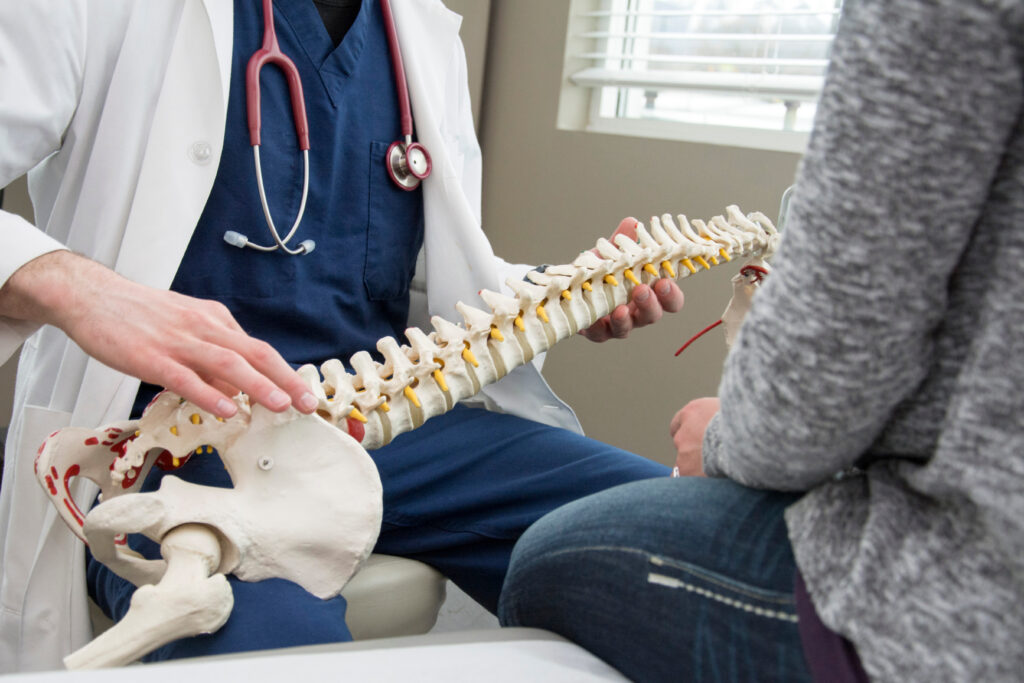Understanding the Prices Entailed with the Best Spine Surgeons in St Louis MO
A Review of Spinal Column Problems That Often Cause Surgical Treatments
Spine conditions such as herniated discs, spine constriction, and degenerative disc condition frequently necessitate medical interventions when conservative therapies stop working to alleviate consistent symptoms. These problems not only lead to substantial discomfort however can likewise drastically impair daily functioning and general high quality of life. Understanding the nuances of each problem and the equivalent medical choices, such as discectomy or back combination, is important for efficient administration. As we discover these conditions further, it ends up being noticeable that the decision-making process bordering surgical treatment is multifaceted and warrants cautious factor to consider.
Herniated Discs
Although numerous individuals with herniated discs may locate relief via conventional treatments, surgery becomes a needed factor to consider when symptoms linger or intensify - best spine surgeons in st louis mo. A herniated disc takes place when the soft internal gel of a spinal disc extends via its external layer, possibly leading and compressing nearby nerves to pain, tingling, or weak point in the extremities
Conventional administration usually consists of physical treatment, pain medicines, and corticosteroid injections, which intend to lower swelling and improve feature. In cases where these techniques fail to alleviate incapacitating signs, surgical choices might be explored.
One of the most usual procedure for herniated discs is a discectomy, which entails the elimination of the herniated portion of the disc to eliminate stress on the influenced nerve origin. In much more serious cases, back blend might be required to maintain the influenced vertebrae.
Patients are suggested to talk about the potential dangers and benefits of surgical procedure with their doctor to make a notified decision. Eventually, the goal of any kind of medical intervention is to bring back function, reduce pain, and boost overall top quality of life for individuals struggling with herniated discs.
Back Stenosis
Back stenosis occurs when the spaces within the spine slim, leading to increased stress on the spine and nerves. This problem can create in numerous areas of the spine, including the back and cervical locations, usually as a result of age-related changes, such as degenerative disc illness, arthritis, or thickening of tendons.
Individuals with back constriction may present with signs that include discomfort, feeling numb, prickling, or weak point, mostly in the legs or arms. These symptoms can be exacerbated by tasks that include standing or walking, frequently leading people to look for relief via traditional therapies like physical therapy, drugs, or epidural steroid injections.
However, when these non-surgical treatments fail to give adequate relief, medical alternatives may be taken into consideration. Common surgical treatments for spine stenosis include laminectomy, which includes the elimination of part of the vertebra to minimize stress, and spinal fusion, which supports the afflicted location.
Spondylolisthesis
Spondylolisthesis occurs when one vertebra slips ahead over one more, bring about misalignment of the back. This problem can arise from numerous factors, including hereditary flaws, injury, or degenerative modifications in the spine. It is most typically observed in the lumbar area, specifically at the L4-L5 and L5-S1 degrees.

Therapy choices vary based on the severity of the slippage and the signs and symptoms provided. Conventional measures, including physical treatment, pain management, and task modification, are frequently the first line of protection. When non-surgical techniques fail to relieve signs and symptoms or when considerable nerve compression is present, surgical treatment may be warranted. Surgical choices can consist of spinal blend or decompression treatments, aimed at restoring positioning and reducing neurological signs and symptoms. Early diagnosis and proper administration are essential for optimum outcomes in people with spondylolisthesis.
Degenerative Disc Illness

People with DDD often experience pain that might emit to the arms or legs, relying on the impacted region of the spinal column. The problem can be identified via a mix of professional evaluation, imaging researches, and individual history. Therapy options normally start with traditional steps, consisting of physical therapy, check my blog discomfort monitoring, and lifestyle alterations. When these strategies fail to give adequate alleviation, medical treatments may be considered.
Surgical options for DDD might include spine fusion or synthetic disc substitute, intended at stabilizing the impacted segment and alleviating discomfort (best spine surgeons in st louis mo). Ultimately, the selection of treatment is embellished, considering the severity of the problem, patient health and wellness, and way of life factors
Spine Tumors

Spine growths can arise from various factors, consisting of genetic predisposition, ecological impacts, and pre-existing clinical problems. People might offer with a variety of signs, consisting of local discomfort, neurological deficiencies, weak point, or modifications in bowel and bladder function, depending on the tumor's size and area.
Surgical intervention might be warranted to relieve symptoms, get a biopsy, or remove the lump entirely. The objective of surgery is commonly to unwind neural aspects and stabilize the blog spinal column. Early discovery and intervention are important for optimizing end results in patients with spine lumps.
Conclusion
In summary, back conditions such as herniated discs, spine constriction, spondylolisthesis, degenerative disc condition, and spinal growths frequently require medical intervention due to their prospective to trigger considerable discomfort and functional impairment. While traditional treatments might supply short-term alleviation, surgical choices become vital when signs and symptoms persist or get worse. Timely diagnosis and intervention play a vital role in restoring feature and improving the top quality of life for damaged people, underscoring the significance of thorough spine care.
/0x0:512x512/prod01/channel_2/media/mccms/content-assets/academics/residencies-and-fellowships/spine-surgery-fellowship-minnesota/overview/final-512X512-OR710-2020-10-05_0007.jpg)